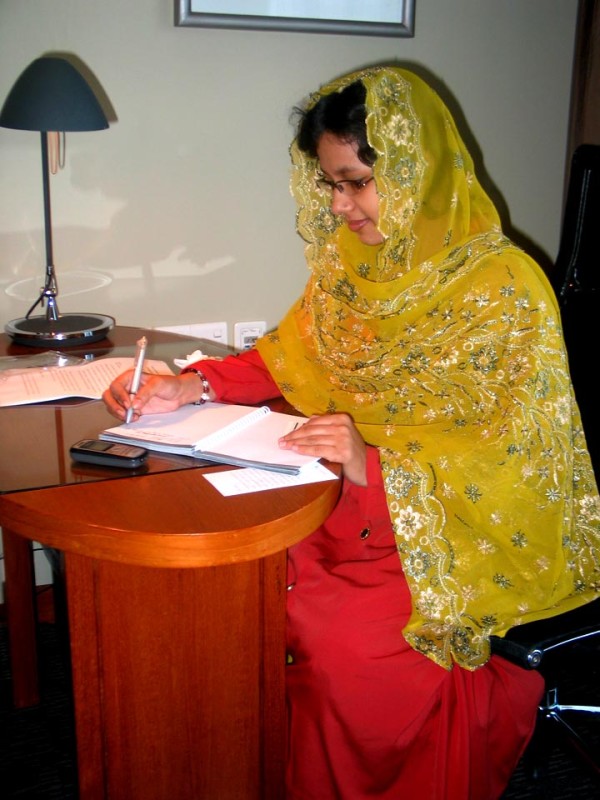The impact of Information and Communication Technology (ICT) has moulded modern human life in diverse ways. Day by day people’s reliance upon ICT is increasing and in the virtual world people have drawn closer to each other, especially the young generation. It is as if social networking has squeezed the cyber space of the younger generation. The socialization process of children and the young has been greatly influencing by ICT gadgets and social networking sites.
By Arup Barua& and Raju Ahmed*
This new form of socialization has become a favorite with “gizmo freaks”, and self-supporting, educated, independent, modern women of the 21st Century as well, according to a Halder and Jaishankar, 2009 report.
The emergence and usage of social networking websites is shaping lives in number of ways, both positive and negative. While the impact of ICT by way of making the planet a global village has pluses, on the dark side there is widespread misuse of ICT, right up to the excesses of cyber crime, cyber harassment and more.
Of late, gender based harassment particularly of girls and women have become of serious concern and this is so in many parts of the world, girls likely being the worst victims of cyber attacks and harassment.
This harassment in cyber space has added new dimensions, going beyond typical day-to-day harassment. Such cyber harassment covers posting indecent pictures, lewd comments, obnoxious and humiliating message and so on. Major causes behind the harassment in the physical world and the cyberspaces are motley. In general, motivation of intimacy seeking, or refusal, revenge, peer pressures, odd social norms, poor implementation of laws and so on induce harassment in real world. On the contrary, virtual harassment is stimulated by attempts at making fun of the victim, or personal disputes, refusals, and the very nature and open-ended looseness of Internet use.
Although the reasons behind both forms harassment are different the consequence are somewhat identical. It drives the victims to psychological stress, mental disorders, with defamation of the individual and family, leading to social stigma and even suicide in the worst cases.
To some people cyber networking and socializing are viewed as a waste of time and intellect. Commentator Harris quoted above stated that social networking is viewed as a threat largely because it belongs to the insular, chaotic world of teenagers, which adults do not understand. Thus, based on usage, the cyber world can be labeled either a boon or a bane.
Cyber harassment is quite similar to offline teasing, stalking, bullying, threatening, etc but in rather different ways. While government, NGOs and social workers have been promoting
rafts of programmes, campaigns on ‘violence against women’ and so on in real life these are not addressing the root cause. The result so far is that social networking sites have become breeding ground for girls and women’s harassment in cyber society.
So we have it, along with the pluses of a booming world in cyber space this has brought on hazards as well. Detrimental effects of cyber abuse on women might prove fatal in the near future as the problems created disrupt the regular daily lives offline. Losses due to online and offline harassment is reflected in individual productivity. In addition, intangible losses like emotional suffering, and mental disorders cannot be counted in monetary terms.
Another researcher, Doring (2000), expressed the thought that the biggest danger of cyber socializing lies in cyber-sex, which can result in a never ending traumatic life for women. By “cyber-sex” Doring meant a compact term to cover online harassment of women, cyber prostitution and virtual rape. He emphasizes that the liberalization of women and their activities means more women become victims of cyber-sex and like abuses. Therefore, female users must learn to protect themselves from online abuse by using previous victims’ experiences.
It is time to take measures to deal with this social menace. Mass awareness is needed, particularly among vulnerable girls, women new to the cyber world, also their families. Of course a pro-active role of government agencies is needed; proper counseling support for the victims as well, and exemplary punishment of the criminal element, this will facilitate halting this social evil.
The verdict of the High Court on “The Guideline on Prevention and Protection From Sexual Harassment Offence Against Women and Girls” (2009) is a welcome outcome, but till now it is not followed in the right way. These guidelines are being quietly ignored in all the educational institutions and in work places. These directives need to be translated from ‘Act’ into ‘Action’.
* Students at Dept. of Development Studies, University of Dhaka, Bangladesh.










